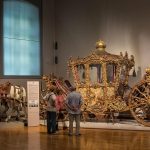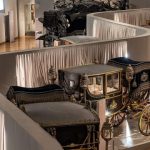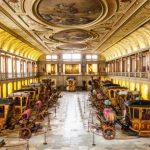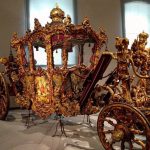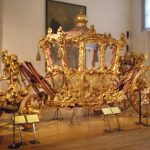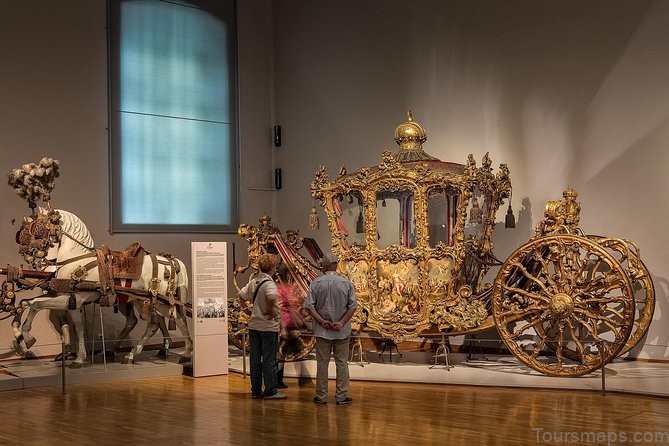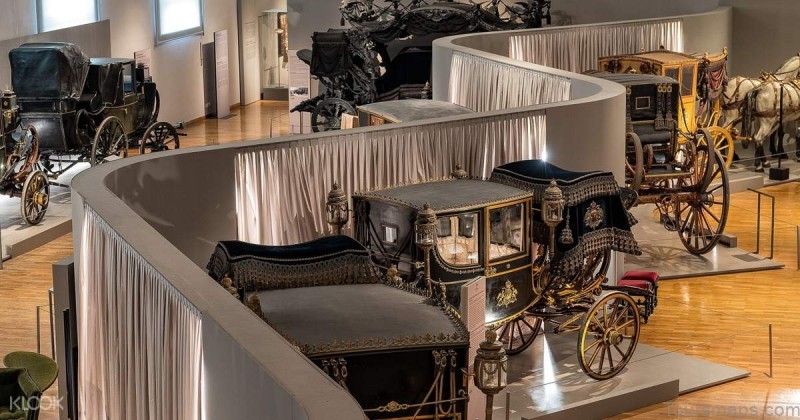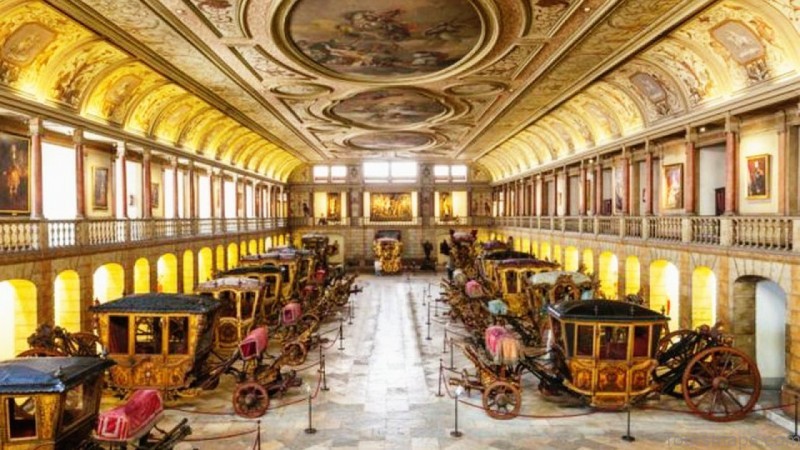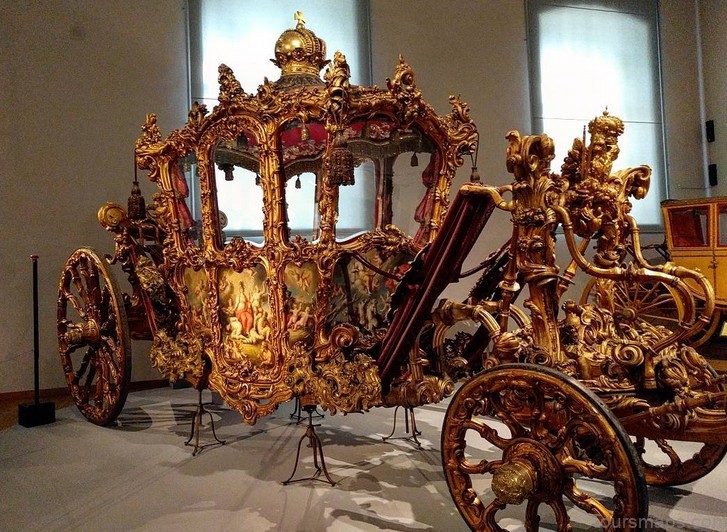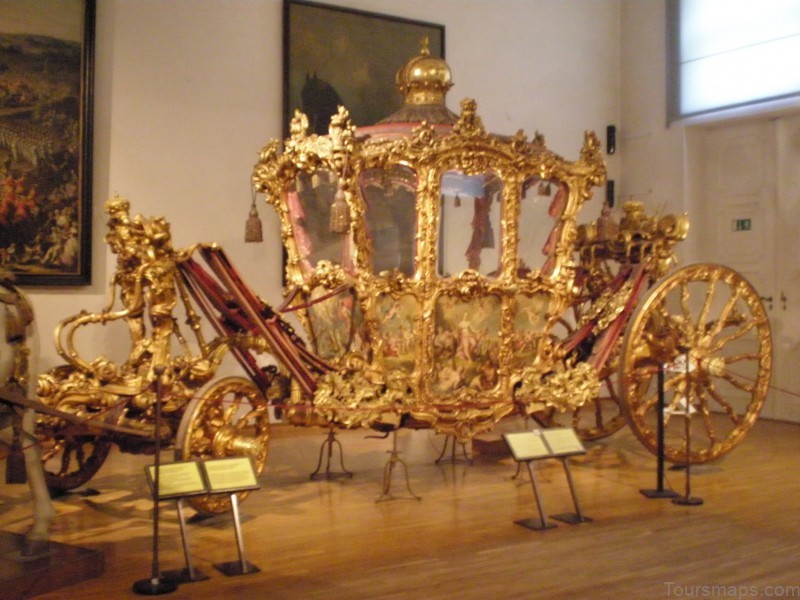THE CARRIAGE MUSEUM -IMPERIAL CARRIAGES FOR WEDDING AND FUNERAL
The Carriage Museum, located near the Schonbrunn Castle building, functions as the impressive final resting place of the former fleet of the Habsburgs. The children’s carriage of Napoleon’s son, “a throne on wheels”, Maria Theresa’s sleds, the gilded Imperial Coach drawn by eight horses and made for the coronation of the emperor of the Holy Roman Empire.
The court automobile model called the “Kaiserwagen” in which Franz Ferdinand was assassinated in Sarajevo or the “black hearse” funeral carriage that was used solely for imperial funerals – these are just a few of the 60 coaches, sleds, litter vehicles and sedan chairs that are on exhibit in the Carriage Museum.
The heavy golden Baroque gala carriages were used for special occasions, such as weddings, coronations and funerals. The gilded Imperial Coach, as well as the two funeral carriages were each drawn by eight stallions. Only crowned members of the imperial family were allowed be taken to their final resting place in one of the black carriages.
The Carriage Museum Vienna Photo Gallery
The so-called “black hearse” funeral carriage was used for the funerals of Crown Prince Rudolf (1889), Empress Elisabeth (1898), Emperor Franz Joseph I (1916) and for the last time for the funeral of Empress Zita on April 1, 1989. A difficult problem came up before this last imperial funeral in 1989: It was almost impossible to find a carriage driver who still mastered the technique of driving an eight horse team.
The daily use carriages of the Habsburgs, the so-called “Ordinari-Wagen”, are also on display in the Carriage Museum. In good weather they could also be driven with the top down. Among them the “Landaulet”, belonging to Empress Elisabeth and built in 1885, is especially noteworthy for its elegance and lightness. She often used this carriage for her travels, lastly right before her murder on the shores of Lake Geneva.
In any case the Habsburgs were easy to recognize on the streets of the monarchy. The dark green finishing was reserved for the court. The golden stripes on the carriage body and on the wheels and the imperial crowns on the lanterns and door handles were the distinctive features of an imperial court carriage.
The Carriage Museum is more than just another museum belonging to the Habsburg court. It is a tribute to the close bond between humans and horses that until the beginning of the 20th century was part of the normal way of life in terms of overland transportation.
Maybe You Like Them Too
- Austria Map Political – Google Map of Vienna, Austria
- Map of Vienna State Opera Wiener Staatsoper
- The Kunsthistorisches Museum Vienna
- THE AUGUSTINIAN CHURCH -HABSBURG DYNASTY AS THE PHARAOHS ON THE DANUB
- Map of New Castle in Vienna

